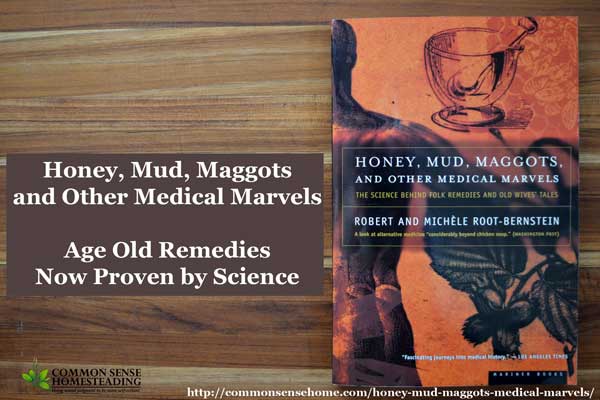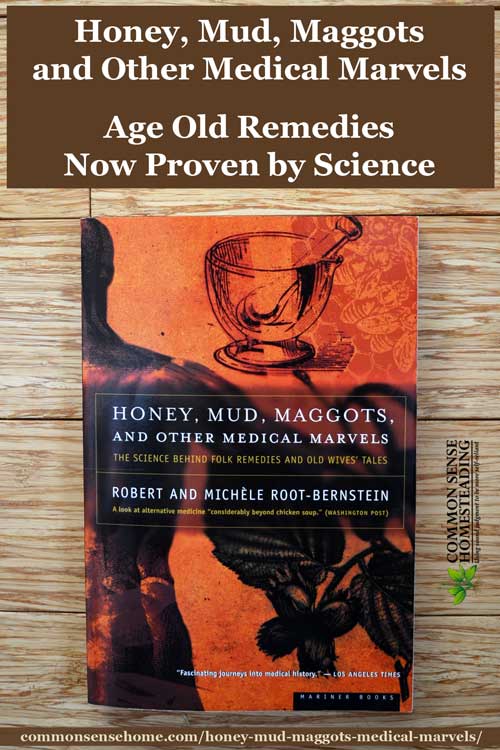Honey, Mud, Maggots and Other Medical Marvels
This post may contain affiliate links. Read my full disclosure here.
Honey, Mud, Maggots and Other Medical Marvels – The Science Behind Folk Remedies and Old Wives’ Tales is a journey through history and culture, highlighting the use of unusual remedies around the world. Although some of these techniques may sound strange or disgusting, most have stood the test of time because they work.

As I was reading, I couldn’t help but think of how these often primitive techniques could be saving lives if only more people knew about them. In a survival situation where you don’t have access to modern medicine, you have to use what you have on hand.
We’ve already talked about using honey as medicine on the site, but did you know you could use a cellophane wrapper as an emergency bandage?
Back in World War II, cigarettes came wrapped in cellophane packaging for the first time. In several different locations, medical personal started using the cellophane wrappers to cover wounds instead of the gauze wrappings that were commonly used at the time.
They found that unlike the gauze, which stuck into the wound, the cellophane did not adhere to wound, and the wound was able to drain around the edges of the cellophane. Medical personnel could also monitor the wound more easily through the clear covering. Wounds covered in cellophane healed quicker with fewer complications. Long term, this led to the development of modern no-stick wound pads.
And the phrase “licking your wounds” likely has its roots in the actual licking of physical wounds on people. In many cases, saliva speeds healing and reduces the rate of infection – no joke. There are historical records of humans licking their own wounds and other people’s wounds, as well as humans having their wounds licked by faithful dogs and even a female moose. I’m not likely to go out in search of a licking moose, but I admit to occasionally sticking an “owie” – a small scrape, cut or bug bite – in my mouth out of instinct. It seemed to help at the time, and it appears I’m not alone.
Bloodletting might sound like one of the most illogical practices, but applied correctly, it can be used to lower a fever. It has also been used successfully to treat angina and high blood pressure. The males in my husband’s family have a tendency towards excess iron production in the blood (hemochromotosis). The treatment – regular blood draws or donating blood. Bleeding is not just an historical footnote.
The humble maggot could likely have saved many lives and limbs back in the Civil War, if they had only known how to use it properly. The correct maggots are astoundingly precise at removing dead tissue, and do so with virtually no pain and more cleanly than a surgeon.
Would you like to save this?
I could go on and on. This book had me up late at night reading page after page, thinking about how these different treatments might have been able to help family members in the past (mom had a blood clotting issue that likely would have been well treated with leeches, without the side effects of the medications), and how I could use them in the future (honey is one of my go to treatment now for cuts and burns).
This book is not a how-to manual, but I consider it a must read to those who are willing to think outside the box and evaluate the usefulness of non-standard medical care. We might not always have access to a doctor or modern medicine. (Just take a look at the situation in Venezuela.) You just never know what life will bring.

You may also enjoy:




